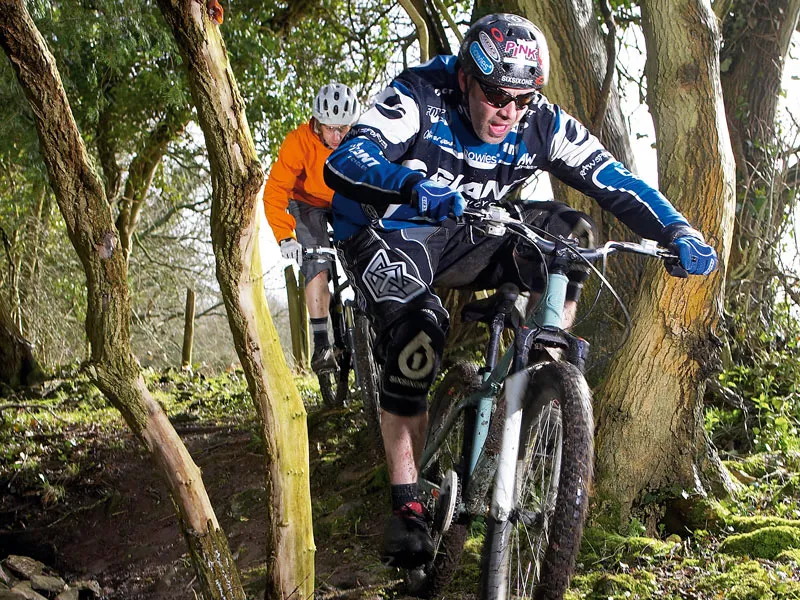There isn’t a single discipline you can’t hack on a hardtail – trials virtually has to be done on a hardtail, jumping tends to be easier without rear suspension and there are more than a few loonies sticking 30ft freeride drops with no travel out back.
To be a well-rounded rider, learning a few basic techniques from each area of mountain biking will improve your skills vastly. Here are the most essential skills you need to have dialled for everyday riding…
- The basics
There are a few key skills that will allow you to ride a hardtail quickly and effectively – you need to pay attention to cornering, traction, off-camber sections and line choice.
Cornering
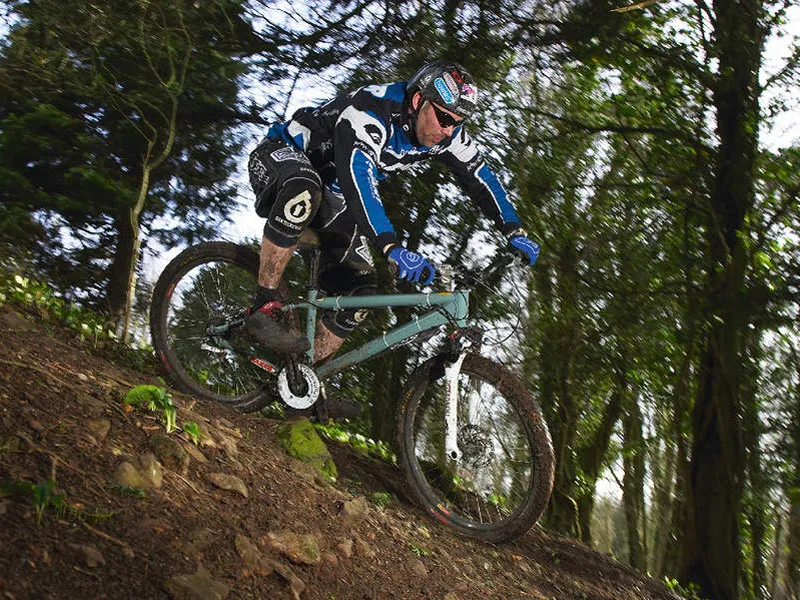
Without suspension out back, you need to keep your bike planted to make it round the turn. The main thing with cornering on a hardtail is committing – if your rear wheel breaks loose, don’t panic, it will regain traction as soon as the tyre finds some grip. Stay focused, relax and enjoy yourself.
Off-camber trails

Riding off-camber is technically the same as riding wet rock, you must focus on the line you’re riding and commit, but if you’re too heavy on the bike you’ll be thrown off it pretty quickly. With off-camber sections you have to learn not to submit to the trail. It will try and steer you away, but you must be firm.
Traction
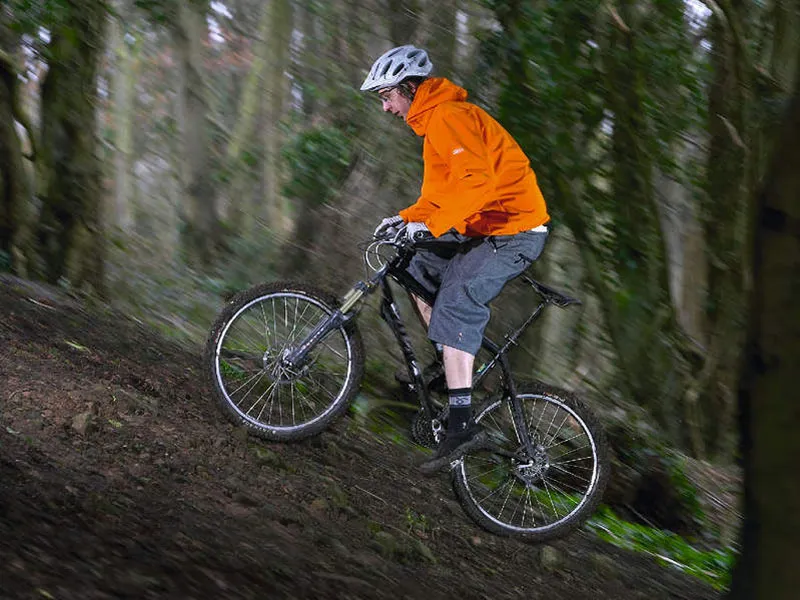
Without suspension, you need to position yourself carefully to maintain constant traction. Too far forward and you’ll wheelspin, too far back and the front wheel will lift. Experiment on a variety of gradients to see what works for you.
Line choice
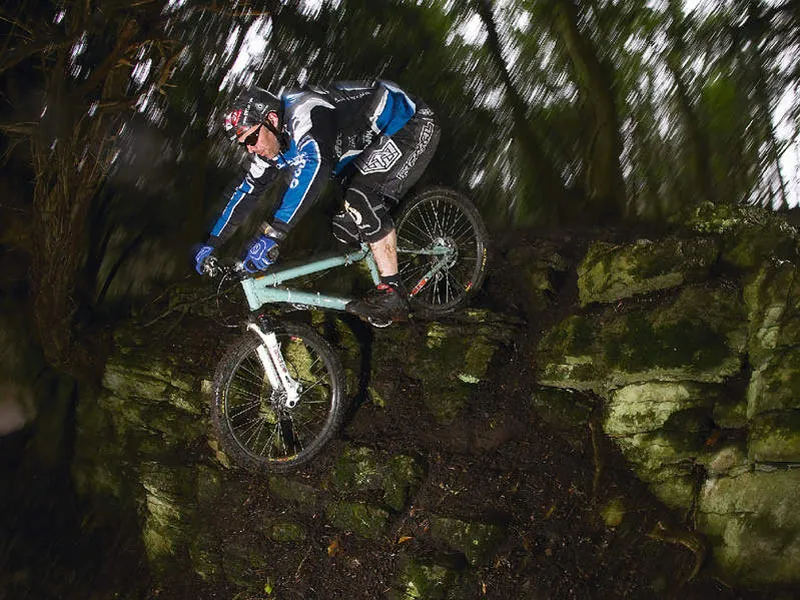
Picking a good line is the key to riding well on a hardtail – you can’t just crash through sections, because the lack of rear suspension means you and your bike are more likely to get damaged.
- Intermediate
Riding roots
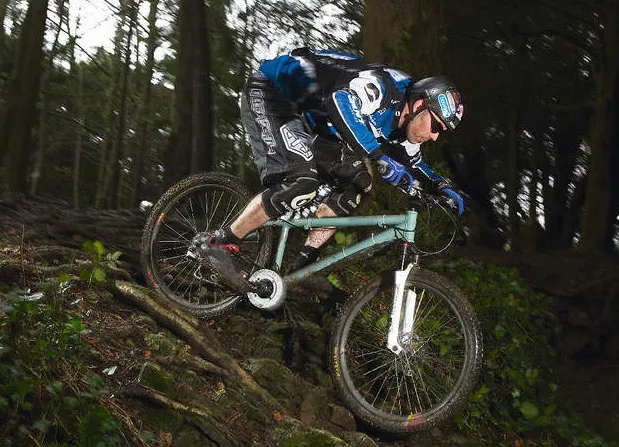
Easily one of the most off-putting things is seeing the trail ahead rippling with roots, especially if they’re wet, off-camber or a little large for comfort. On a hardtail, where you don’t have suspension to correct your errors, you have to attack the roots with 100 per cent commitment or they’ll eat you for breakfast. Obviously, try to avoid the bigger roots, but don’t snake around to get the ideal line because your wheels could wash out – you should hit the roots as squarely as possible. The key factor is unweighting and riding light. If your weight isn’t on the bike when it hits the roots, it only has itself to deal with, under your guidance.
Unweighting
Unweighting your bike is important for riding roots, and it’s often the safest, most predictable and quickest way over them, especially if the roots are wet or you’re launching over them.
For unweighting to work, you need to be riding fast. Just before you hit the roots, push all your weight into the bike and then spring upwards, without taking the bike with you. As the bike hits the roots, your weight won’t be on it, giving you less chance of sliding out. Watch any pro hit a gnarly set of roots – on any bike – and you’ll see him or her employ this tactic.
Big roots
There are two options for tackling big roots when hitting them on a hardtail: either hit them square-on and suck them up or use them as booters to air the whole section. To use the roots as booters/kickers, you should unweight as you hit the first one and then pull up. The bounce off the root should launch you clear of the whole section.
If sucking the roots up, make sure you hit them head on. If you hit a large root slightly sideways on, you risk the front wheel washing out underneath you.
Wet roots
Riding wet roots is one of the scariest things you can do on a bike, especially on a hardtail, where the slightest slide could have you sitting on the trail before you know it.
Imagine walking on ice – you tread softly with flat feet to spread your weight, and move subtly. Combine this approach with the unweighting technique and always be ready for a wheel to step out from under you. If it’s the front wheel, you’ll need to get a foot out quick. If it’s the rear wheel, get ready to change direction because correcting a slide on wet roots is likely to make you crash.
What your bike can handle
- Advanced
Attacking
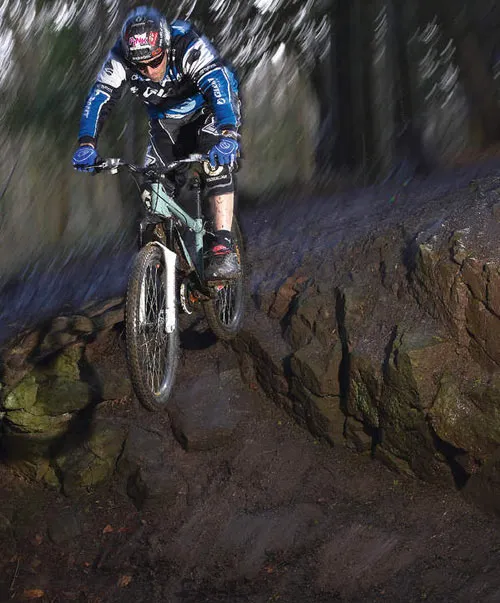
Without the traction of suspension, often the easiest way to deal with certain trail obstacles can be to jump the lot. This steep bank is super slippery and it has some wet rocks and roots on the run-in.
With a bit of speed, tackling it is easier but, obviously, it’s not a move for the faint hearted. You must be confident in your abilities for this kind of move. If you are, then here’s what to do…
Look at the run-in and run-out first, pick a line and stick to it. If you were to roll this, you’d have to pick your way through the roots and carefully roll over the edge. Make it easy with a dose of speed and, using the same technique as a basic drop, loft yourself clear of the section that others you. Speed is your friend because your bike will be more stable than at lower speeds.
This can be applied to many trail situations – rocks, roots, drops or steep banks – that would cause a trail hiccup if you were to attempt rolling them half-heartedly.
How much is too much?
Obviously, there are limits to what can be done on certain bikes – namely lightweight cross-country rigs. However, all mountain bikes take a fair hammering, even on ‘light’ cross-country rides. Therefore, learning the correct technique is essential if you want to minimise the chances of damage occurring, and many of these techniques apply to all kinds of mountain biking.
If you have a cross-country hardtail, be aware that the wheels won’t be as strong as on a freeride hardtail, and the lightweight parts have to be treated with respect rather than brawn and abuse. Lowering the saddle when learning new techniques is a good idea because you’ll have more room to manoeuvre, as is fitting a pair of flat pedals so you can get off the bike easily in an emergency.
Hardtail bikes - Warner’s wisdom
“I love hardtails because they’re so simple – there’s no power loss, everything’s fast and responsive and they don’t let you get away with anything, so they force you to learn good technique," says Rob Warner, the three-time UK national DH champion. "You have to learn to ride properly on a hardtail, and you can take those skills to full suspension, but it doesn’t work the other way round.
"Because there’s no safety net of suspension, you must be smooth and know how to find grip – something that most of the downhill racers in the UK have learnt. If you can ride a hardtail fast, you can ride anything fast.
"The hardtail is the starting point for every rider, but it’s also the best bike anyone could own. 8in travel bikes can only be ridden in certain places, whereas hardtails do the lot, up, down, along and off."
